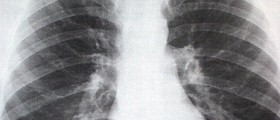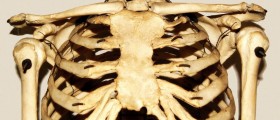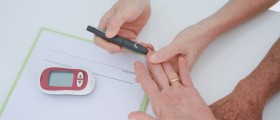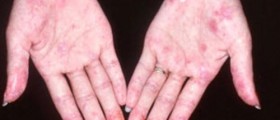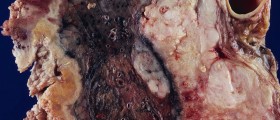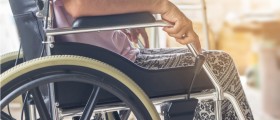The xiphoid process is a small, sword-shaped piece of cartilage which ossifies (becomes bone-like) and extends off the lower part of the sternum, which is the breastplate of the chest.
The clinical significance of this bone
Symptoms
Pain or tenderness of the xiphoid process is a condition called xiphoidalgia or xiphodynia. Symptoms of this condition can include the following:
- Chest pain.
- Abdominal pain.
- Nausea.
- Pain radiating to the back, shoulders, arms and/or the neck.
- Pain increases when bending or twisting.
It was long thought that this issue was a rare occurrence and it was therefore under-considered by most doctors.

Causes
Causes of xiphoidalgia may include blunt trauma to the chest, acceleration/deceleration injuries, aerobics or lifting up of heavy objects.
Diagnosis
This condition can be diagnosed clinically as one should be able to reproduce the patient's symptoms by applying moderate pressure to the xiphoid process and/or its surrounding structures. Studies have shown that xiphoidalgia is simple to diagnose by just palpating the xiphoid process whenerver patients are complaining of chest or abdominal pain.
Although xiphodynia can often occur in the absence of any other medical condition, it has been found to be present in conjunction with life-threatening conditions such as heart diseases which could include pericarditis, myocardial infarction and angina pectoris.
In the case where a clear diagnosis can't be established, a simple provocative test can be performed which may allow one to discover a symptomatic xiphoid process. In patients who have received medical treatment for an 'established' medical condition and in whom symptoms still persist, one could then examine a patient for the diagnosis of xiphodynia.
Treatment
Xiphodynia seems to be a self-limiting disorder in most cases, which means that it usually resolves on its own. Patients are prescribed mild analgesics in the meanwhile until their symptoms dissipate. Other conservative measures can include using topical heat and cold and an elastic rib belt to assist with any pain.
In some cases, xiphodynia may not be self-limiting and the treatment of choice here is an injection of local anaesthetic and steroids. Although this xiphoid injection often cures the issues, it isn't without risk of complications which may include peritoneal or pleural perforation, localized infection or the development of a pneumothorax.
Conservative physical therapies such as a short course of a non-invasive treatment, like ultrasound or low-level laser, could be worth a trial before proceeding with the injection. Unfortunately, there isn't any evidence to suggest that these therapies are effective.


